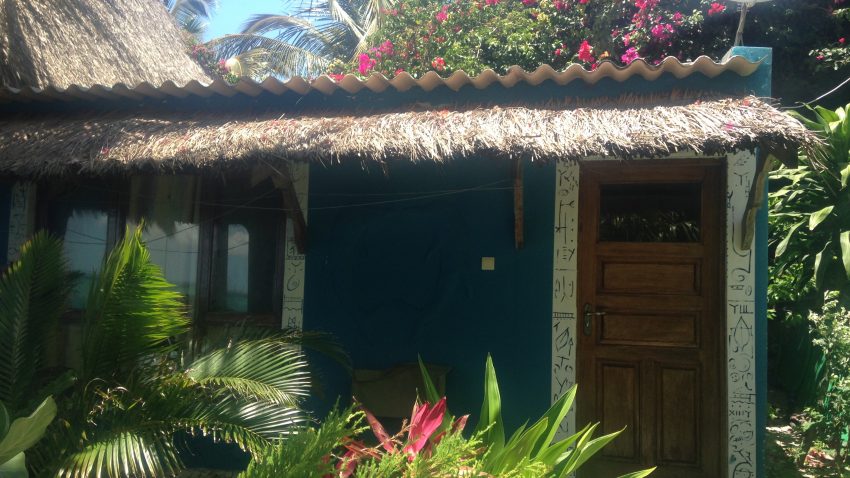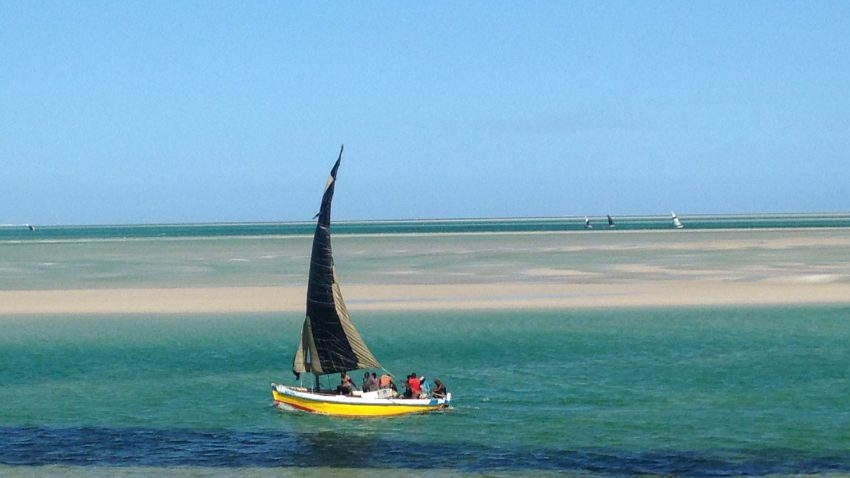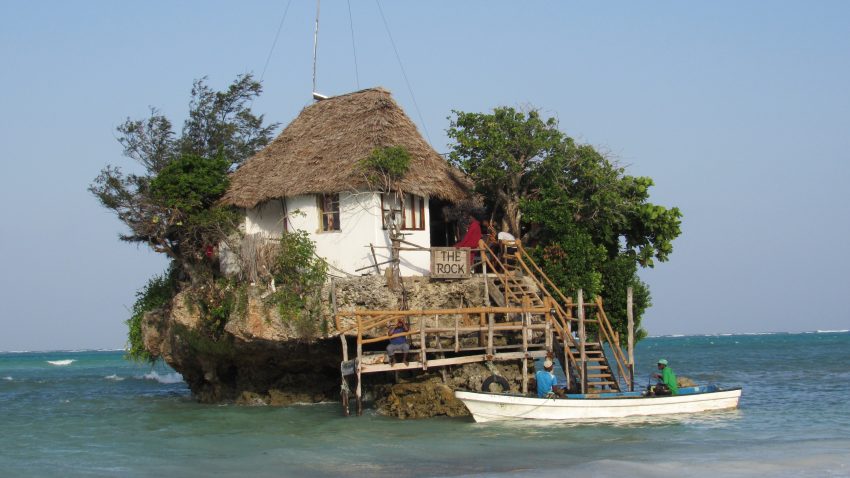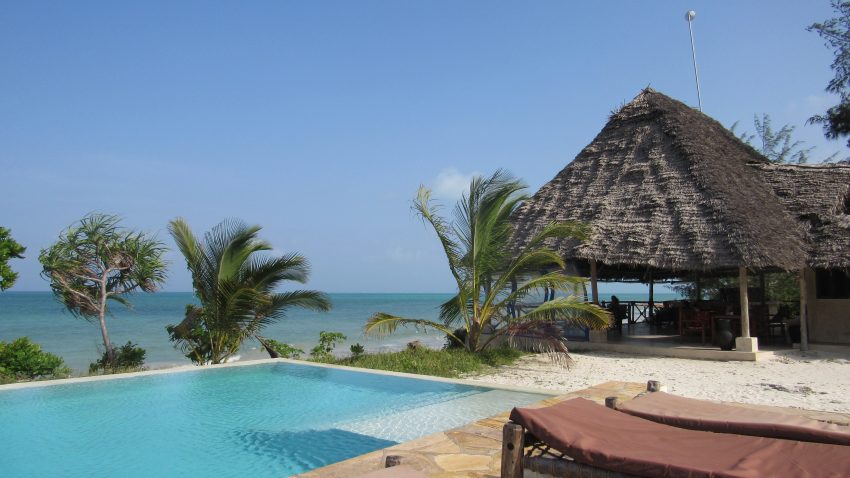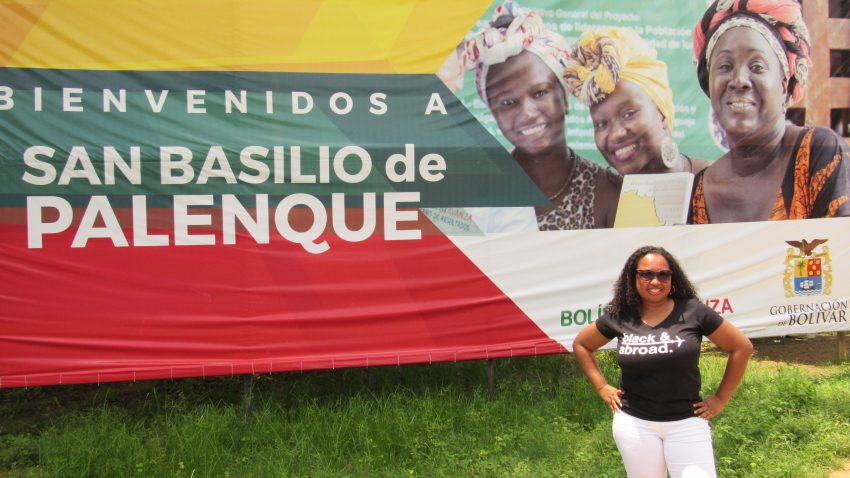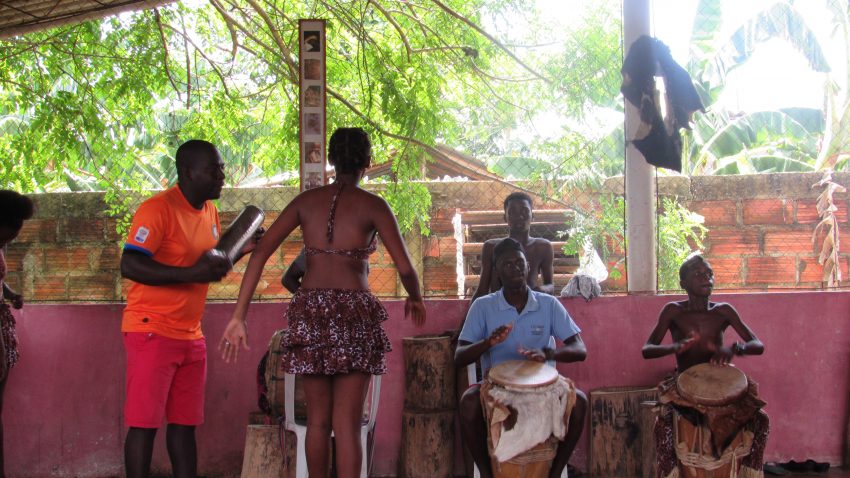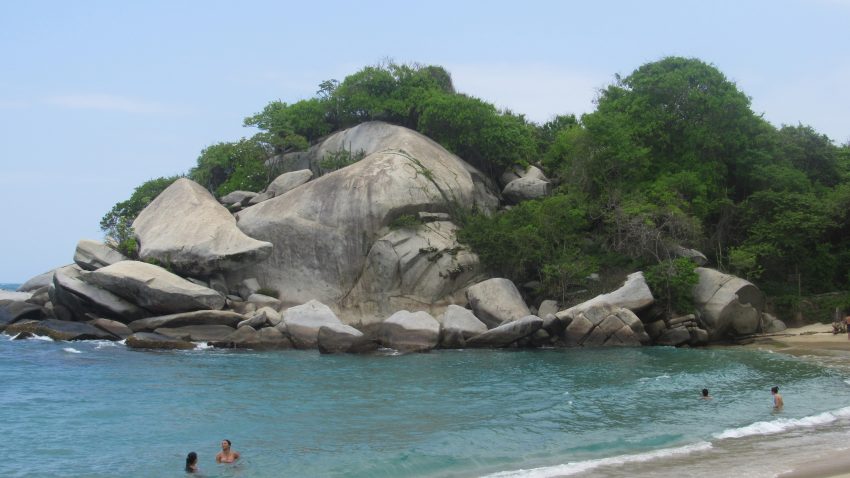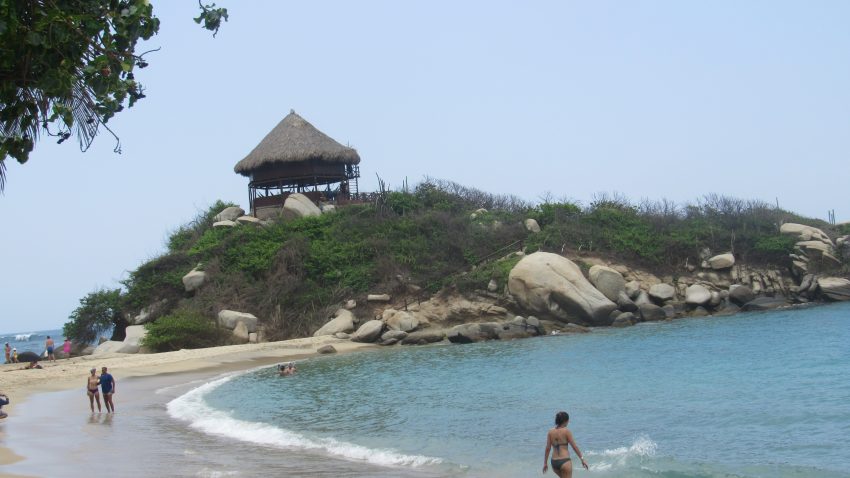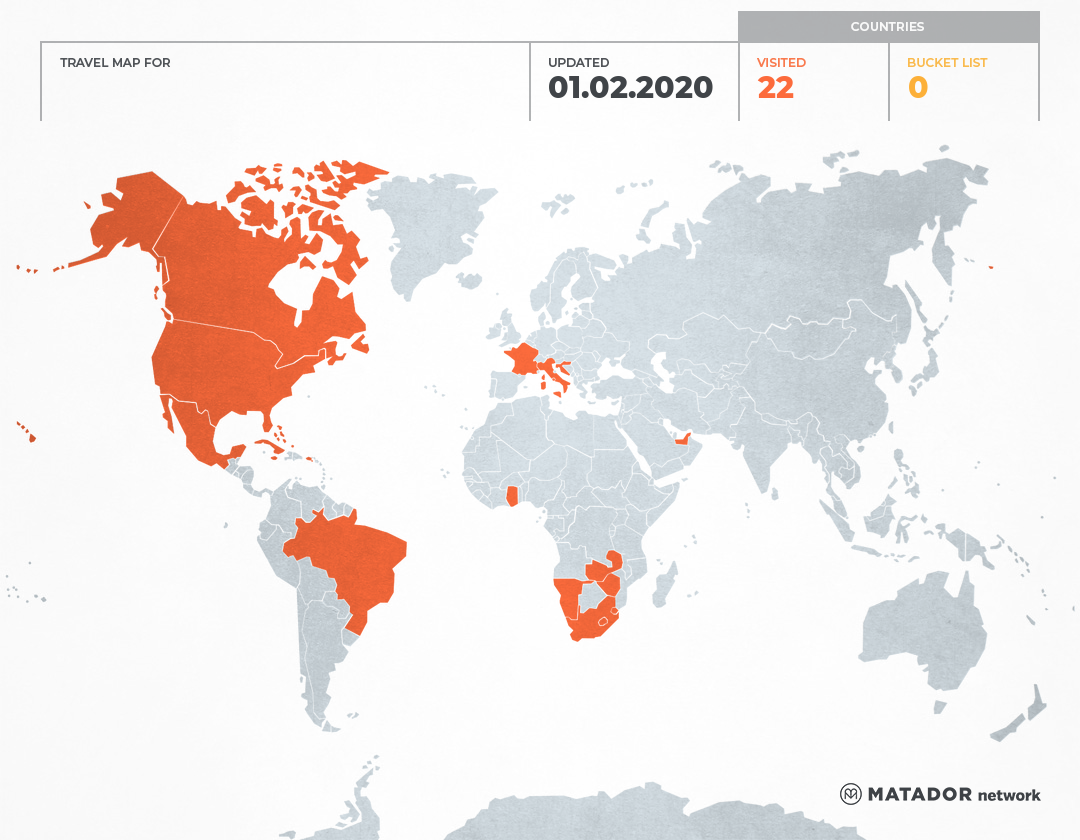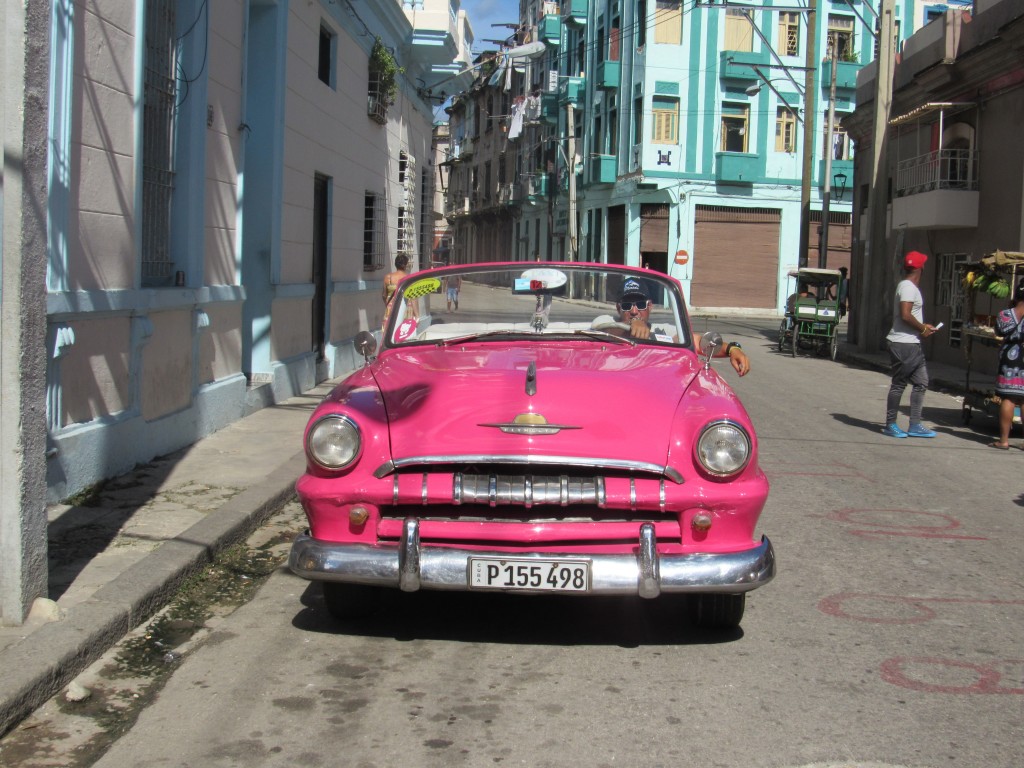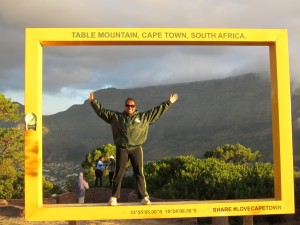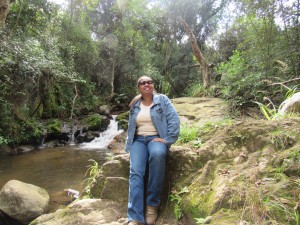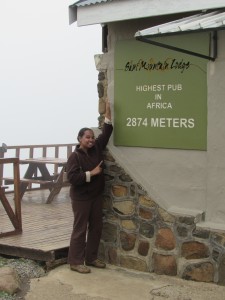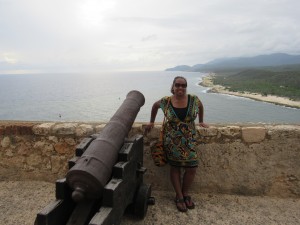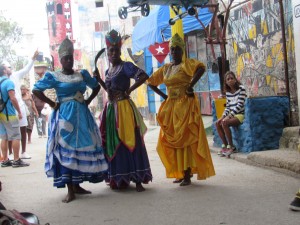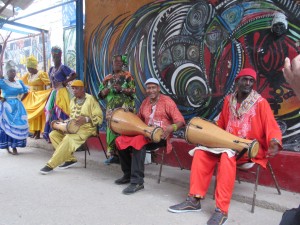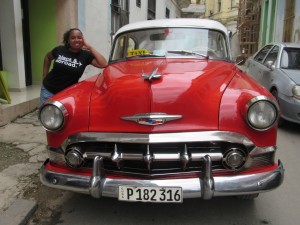The post My 2018 Year in Review first appeared on The Travel Sista.
]]>
Here we are — December 31, 2018. My how this year has flown by. I can’t believe that 2018 is about to come to a close. As typically happens at this time of the year, many of my Facebook friends are posting 2018 reflections and 2019 goals. One of my friends did something different — he posted a listed of all the airports he traveled through in 2018. Of course, that prompted me to do the same (and made it easy for me to reflect on my year in travel).
My 2018 Airports
JNB – MPM – VNX – DAR – ZNZ – JFK – FLL – CTG – MSY – PHX – DTW
I brought in 2018 in the same place I will bring in 2019 – Johannesburg, South Africa – which is easily one of my favorite places on the planet. The creative vibe and energy here just can’t be beat. I’m a January birthday baby and if you didn’t know, I celebrate all month. I also love beaches, so of course, the celebration involved multiple beaches. My birthday celebration started off in Maputo, Mozambique. I checked into my guest house, dropped off my bags, and met up for dinner with some friends from one of my travel groups. We ended up at a house party with some new Mozambican and Angolan friends and had the time of our lives. As they say, what happens in Maputo, stays in Maputo.
Next, up was Vilanculos and the Bazaruto Archipelago. Vilanculos is a coastal town in southern Mozambique, known for its beautiful beaches, water sports, and snorkeling/diving opportunities. Vilanculos is also the gateway to the Bazaruto Archipelago, a chain of six islands off the Mozambican coast. The beaches and snorkeling there were superb.
I finished off my month-long solo birthday celebration in Dar es Salaam, Tanzania and my dream location, Zanzibar. I spent my actual birthday, January 16th, on a secluded beach in Paje. That evening, I met my tour guides for dinner at the Rock restaurant, which is famous because it sits in the middle of the Indian Ocean. It was high tide when we arrived and we had to take a small boat to get to the restaurant. It was low tide by the time we left and we were able to walk back to the beach. Talk about a cool experience! I returned home at the end of January and settled back into the real life. (sigh)
After a 2.5-month travel break, next up was Louisiana for the New Orleans Jazz Festival. I’m always happy to visit family and eat too much good food there. But, the highlight was my Detroit home girl, Anita Baker, who closed out the show. She put on a great performance.
For Memorial Day, I went to Fort Lauderdale which was completely rained out. Luckily, I was only there for two days before moving on to Cartagena, Colombia. Colombia was a new country for me, not on my bucket list, but one which I thoroughly enjoyed. The first highlight was my visit to Palenque, the first free town in the Americas founded by escaped slaves. Located about 45 minutes from Cartagena, in the foothills of the Sierra Maria mountains, today Palenque is inhabited by the descendants of those slaves, who are proud of their heritage and retain many African customs. Their very existence is a testimony to the human spirit and resilience in the toughest of situations. The second highlight was Tayrona National Park and Cabo San Juan beach. It took six hours to get there, including three buses, a horseback ride through the jungle and short trek, but boy was it worth it. I spent a relaxing day on the beach and the lunch of fried fish, plantains, and coconut rice was the icing on the cake.
Over the summer, I returned to two states where I formerly resided: Arizona and my birth home of Michigan. In Phoenix, I was honored to see a family friend consecrated as Bishop and I visited with friends I hadn’t seen in a few years. Of course, I couldn’t leave Arizona without visiting Sedona, one of my favorite places in the state. The beauty and serenity there is unmatched. In Michigan, I celebrated the 20-year judicial anniversary of a judge I previously worked for. It was great to see former colleagues and friends.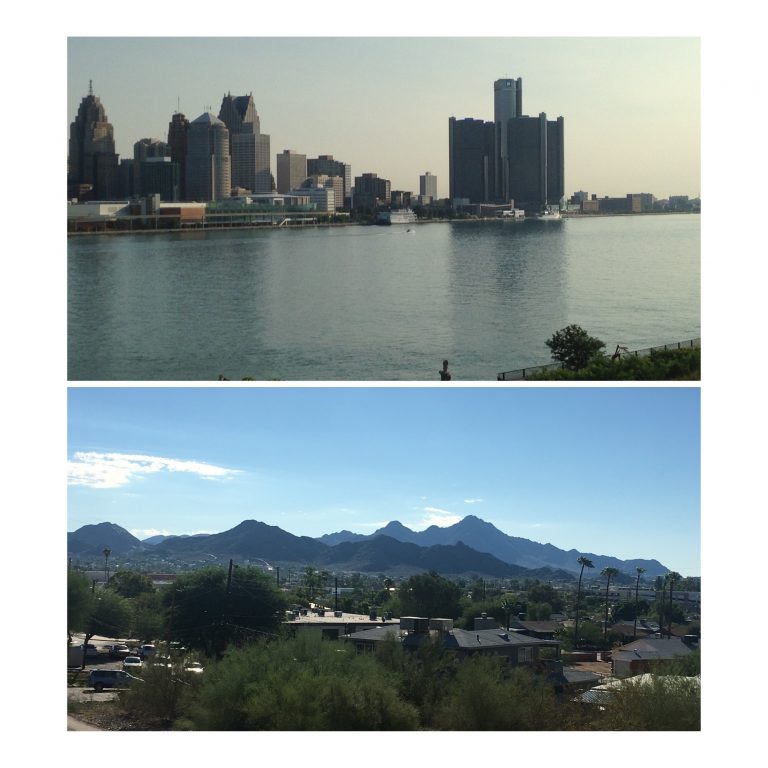
I’m ending the year back where I started – South Africa. This country has become my second home and I miss it every time I leave. But I’ve decided to do some venturing out in 2019, to explore other countries and finally make it Machu Picchu. I may see less of SA in 2019, but my heart will still be there.
Wishing you a Happy New Year and more travel adventures in 2019. Cheers!
Share ThisThe post My 2018 Year in Review first appeared on The Travel Sista.
]]>The post Birthday Musings and Bucket List Progress first appeared on The Travel Sista.
]]>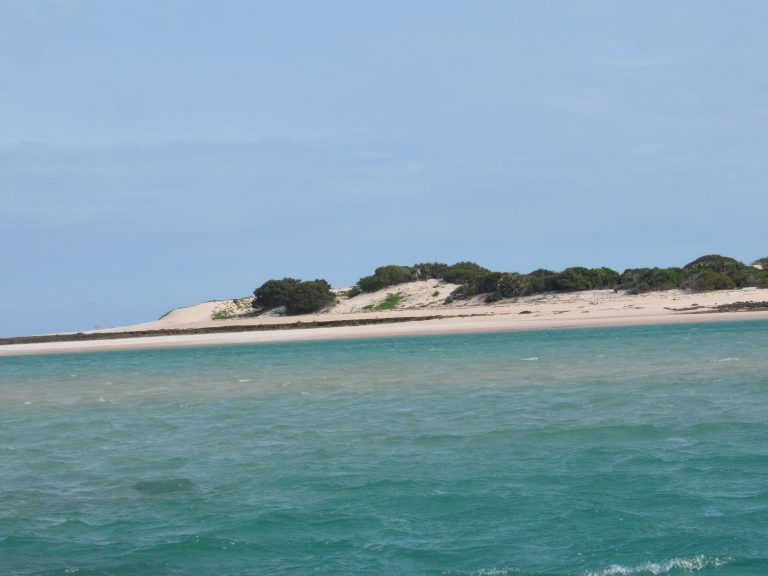
I celebrated a birthday yesterday and arrived at my dream destination – Zanzibar! As I begin another year on the planet, I thought it was a good time to re-visit my progress on my bucket list over the past year. I’m pleased to say I knocked off four more items on the list.
I finally took a DNA test to determine my genetic ancestry. In many ways it confirmed what I already knew (considering the slave history of America) – I’m mixed with primarily West African and some European ancestry. But I was pleased to learn I’m 72% African, with traces of DNA from Cameroon, Congo, Benin, Togo, Ghana, Ivory Coast, Nigeria and Senegal. Needless to say some of these places have moved up the ladder on my list of places to visit.
I spent 3 months in southern Africa (over their winter no less) to see how I would adjust to living abroad. I temporarily rented an apartment in Johannesburg and lived like a local. It was an amazing experience and concluded that I would adjust just fine.
I traveled to my 10th African country, Mozambique. This hidden gem, with a long coastline along the Indian Ocean and spectacular beaches and islands, has become one of my favorite countries on the continent.
Lastly, I had my first Travel Blogger of the Month feature article in Griots Republic, where I discussed eco-tourism in Africa and introduced my new travel-related business, the Travel Africa Movement (TAM). TAM was born out of my desire to encourage more people to visit Africa and experience the sights, sounds and wonders I have on that beautiful, but often-maligned continent. I have both a Facebook group where members share travel deals, information and resources about travel to Africa, as well as a website where I offer packaged group trips and tee shirts. I’d love for you to join me on an African adventure.
I’m looking forward to another year of travel and cranking away at new places and things on the bucket list. I already have Malaysia and Thailand in the works, and I’m hoping to finally visit Machu Picchu later this year. But for now, I have to go. I’m headed to the beach.
Share ThisThe post Birthday Musings and Bucket List Progress first appeared on The Travel Sista.
]]>The post What Trump’s New Cuba Travel Rules Mean For You first appeared on The Travel Sista.
]]>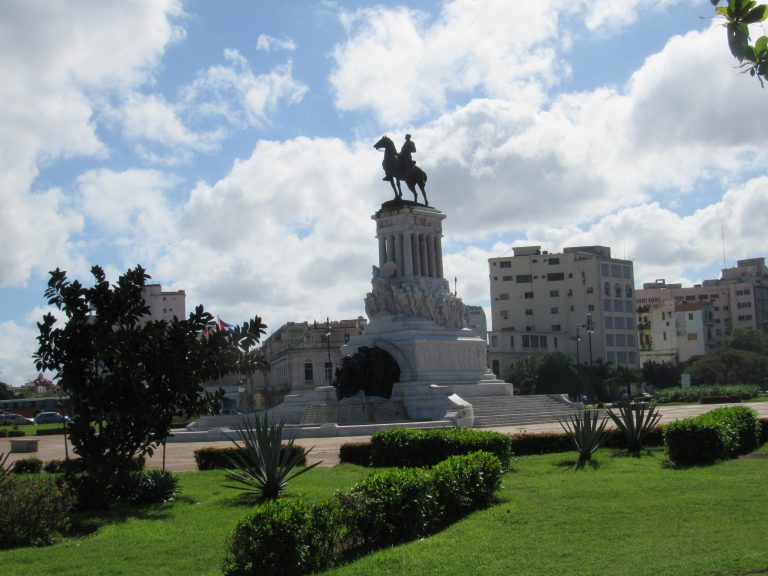
In 2014, former US President Barack Obama announced sweeping changes to America’s policy towards Cuba. The United States re-established diplomatic ties and re-opened the American embassy in Havana. Obama also authorized travel by general license for all 12 categories set forth in the Cuban Assets Control Regulations, eliminating the need to apply for a specific license for most travelers. Though tourism remained banned, Americans could plan individual “People-to-People” trips with a full schedule of educational exchange activities. Travelers could meet the regulatory requirements with museum visits, cultural sightseeing, conversations with Cubans about their society, and keeping a daily journal. These relaxed rules made travel to Cuba easier and more affordable for the average American, who prior thereto was relegated to expensive group trips. It also benefitted the growing number of Cuban small business owners, including the owners of casa particulares (private lodging similar to a bed and breakfast) and paladares (private restaurants), taxi drivers and tour guides.
As many travelers were dreading, on June 16, 2017 President Donald Trump announced changes that would reverse some of the Obama era policies. The new rules, dubbed “A Better Deal for Cuba”, prohibit Individual People to People travel and any direct transactions with entities related to the Cuban military, intelligence, or security services, including state-owned hotels, restaurants, tour buses, and other businesses (the State Department will be publishing a list of prohibited entities). Trump also announced increased enforcement actions, with travelers subject to immigration checks or Treasury Department audits to ensure they fall under one of the permitted categories.
On the same day as Trump’s announcement, the Treasury Department Office of Foreign Assets Control (OFAC) issued FAQS regarding the policy changes. Here is what we know:
1. INDIVIDUAL PEOPLE TO PEOPLE TRAVEL WILL NO LONGER BE AUTHORIZED
As directed by Trump, within 90 days OFAC intends to issue regulations that will end individual People to People travel to Cuba. The announced changes do not take effect until the new regulations are issued. The new policy will not result in changes to the other (non-individual people-to-people) authorizations for travel.
For persons with pre-planned trips, there is no need to cancel. As long as you have completed at least one travel-related transaction (i.e., purchasing a flight or reserving lodging) prior to the June 16, 2017 announcement, you are exempt from the new rules (provided the travel-related transactions are consistent with then current OFAC regulations).
2. GROUP PEOPLE TO PEOPLE TRAVEL WILL STILL BE AUTHORIZED
According to current OFAC regulations, travelers utilizing the People to People authorization must maintain a full-time schedule of educational exchange activities that are intended to enhance contact with the Cuban people, support civil society in Cuba, or promote the Cuban people’s independence from Cuban authorities, and that will result in meaningful interaction between the traveler and individuals in Cuba.
Group People to People travel will still be allowed, but it must take place under the auspices of an organization that sponsors such people-to-people exchanges and travelers must be chaperoned by an organization representative to ensure they maintain a full-time schedule of educational exchange activities.
3. INDIVIDUAL TRAVEL UNDER THE SUPPORT FOR THE CUBAN PEOPLE CATEGORY WILL STILL BE AUTHORIZED
The Support for the Cuban People category encompasses travel-related transactions and other transactions that are intended to provide support for the Cuban people, which include activities of recognized human rights organizations; independent organizations designed to promote a rapid, peaceful transition to democracy; and individuals and non-governmental organizations (NGOs) that promote independent activity intended to strengthen civil society in Cuba. The traveler’s schedule of activities must not include free time or recreation in excess of that consistent with a full-time schedule in Cuba.
Picture of the night @MarioDB and I hammered out the new Cuba policy. Thankful for his leadership! #cubancoffee #BetterDealforCuba pic.twitter.com/ukpQJo2eev
— Marco Rubio (@marcorubio) June 16, 2017
US Senator Marco Rubio, who co-authored the new policy, clarified via Twitter that individual travel under the Support for the Cuban People category is authorized as long as travelers stay in privately owned lodging rather than military run hotels.
& headline not https://t.co/BJQeStuAh2 for Cuban people category allows individual travel, but can’t stay at military controlled hotel 3/3
— Marco Rubio (@marcorubio) June 17, 2017
Individual Americans can travel to #Cuba under Support for the Cuban people category but must use privately owned lodging like AirBnB 4/5
— Marco Rubio (@marcorubio) June 16, 2017
However, in order to qualify under this category, individual travelers will seemingly need to have more engagement with NGOS, organizations and individuals working to promote democracy and/or to improve the lives of the Cuban populace.
4. AUTHORIZED TRAVEL BY CRUISE SHIP OR PASSENGER VESSEL WILL STILL BE ALLOWED
Travelers will still be able to engage in authorized travel to Cuba by cruise ship or passenger vessel, provided it is not with a prohibited entity.
5. TRAVELERS MAY STILL PURCHASE AIRLINE TICKETS FOR AUTHORIZED TRAVEL TO CUBA
The new policy does not change how persons subject to U.S. jurisdiction traveling to Cuba pursuant to the 12 categories of authorized travel may purchase their airline tickets.
6. TRAVELERS MAY STILL PURCHASE AND IMPORT UNLIMITED AMOUNTS OF CIGARS AND ALCOHOL INTO THE UNITED STATES FOR PERSONAL USE
Under current OFAC regulations, travelers engaged in authorized Cuba travel may buy and import unlimited dollar amounts of Cuban cigars and alcohol in accompanied baggage, provided it is for personal use only. It is unclear whether this policy will change under Trump’s new rules, but as of now it is still effective.
WHAT THIS MEANS FOR FUTURE TRAVEL TO CUBA
Once you peel back the layers, Trump’s new changes represent only a partial shift from Obama policies. Individual trips may be more difficult to plan and coordinate, but they are still allowed. And as before, individuals traveling to Cuba are required to keep records of their Cuba-related transactions for at least five years in case of a Treasury audit. Now more than ever, it’s important that they do so.
What are your thoughts on the new Cuba travel policy? Does it affect your travel plans? Share your comments below.
Share This
The post What Trump’s New Cuba Travel Rules Mean For You first appeared on The Travel Sista.
]]>The post How to Map the Countries You’ve Visited first appeared on The Travel Sista.
]]>
The Travel Sista has been to: Bahamas, Brazil, Canada, Croatia, Cuba, France, Ghana, Italy, Jamaica, Lesotho, Mexico, Namibia, Puerto Rico, South Africa, Swaziland, Turks and Caicos Islands, U.S. Virgin Islands, United Arab Emirates, United States, Vatican, Zambia, Zimbabwe.
Considering that there are 196 countries in the world (that number is disputed largely due to political reasons), I’ve only covered about 11% of the globe. But I feel extremely blessed for the opportunity and the amazing experiences I’ve had in each country I’ve visited thus far. As Edith Wharton once said, “one of the great things about travel is that you find out how many good, kind people there are.”
Looking at my travel map, I definitely need to explore more of South America, Asia and Africa. I’ll be visiting several new African countries this year. I think 2017 will be my year to go on a tour of Southeast Asia and see more of the Middle East. In the meantime, I look forward to plowing down more things on my bucket list and reaching my 6th continent this year – Australia.
So, what’s your number? Please list your countries below or share your travel map.
Get your own travel map from Matador Network. It’s easy and fun.
The post How to Map the Countries You’ve Visited first appeared on The Travel Sista.
]]>The post 12 Things You Need to Know Before You Travel to Cuba (Legally) first appeared on The Travel Sista.
]]>Although diplomatic relations between the United States and Cuba have been restored, US citizens and permanent residents are still prohibited from traveling to Cuba for purely tourism purposes. You may, however, travel to Cuba under a general license if your travel falls within one of the 12 categories of authorized travel and no prior application is required. For most people, educational activities, religious activities, support for the Cuban people, and humanitarian projects are the most appropriate categories to get there. Here are 12 things you should know before you go.
- GETTING THERE
Several companies offer organized People to People tours for Americans. However, they tend to be pricey and the schedules are very regimented. Those willing to make their own arrangements and craft their own itineraries can save a bundle.
Commercial flights from the U.S. to Cuba resumed in August 2016, so Americans can now fly directly to Cuba instead of transiting through Mexico and other Caribbean cities. Ten U.S. airlines – American, Jet Blue, Alaska Airlines, Delta, Frontier, Silver Airways, Spirit, Southwest, Sun Country and United – now offer direct flights to Havana and other Cuban cities. have not yet resumed, so the only options are charter flights from the U.S. or connecting flights through Mexico and other Caribbean countries. Copa, Jet Blue, Interjet, Aeromexico, and Cubana all offer flights to Havana.
- VISA
You need a visa to enter Cuba but they’re easy to obtain. I got mine at the airport in Cancun for only $20.00. If you travel with a U.S. airline by charter, the airline will assist with handle your visa arrangements for an additional $50 to $100 80 to $90. Cuba Travel Services also offers a visa service for $85. You have to fill out a form declaring that your travel falls under one of the 12 authorized categories.
- MONEY
US-based credit cards don’t yet work in Cuba so Americans have to pay cash for everything. Cuba has two official currencies – the convertible peso or CUC (pronounced “kook”), which is mostly used by foreigners, and the Cuban peso or CUP (also known as “moneda nacional”), which is mostly used by Cubans. The conversion between CUC and CUP is 1 CUC = 25 CUP. The CUC is pegged at par with the US Dollar (USD). But there is a 10% penalty (due to the US embargo) and a 3% service charge when exchanging USD to CUC, so effectively 1 USD = .87 CUC. In order to avoid the 10 % penalty, some visitors exchange their USD to Euros before arriving.
Currency can be exchanged at banks or cadecas (exchange houses), but expect a wait because lines are usually long. Some hotels will also exchange currency (and you avoid the long lines). Make sure to request small bills because most people and businesses cannot make change for larger bills. Do not exchange money with strangers on the street, as some are known to peddle counterfeit bills.
- WHERE TO STAY
If you want an authentic Cuban experience, staying at a Casa Particular (Casa for short) is the way to go. A Casa is a private family establishment that offers paid lodging, typically costing $20 to $75 per night. Breakfast may be included and many also offer lunch and dinner for an additional fee. I stayed in a private room with an amazing family that treated me like their daughter. I highly recommend it.
There are various types of Casas, including private rooms, apartments, or entire houses. Cuba Junky has a full list with photos and descriptions, and AirBnb also recently started to list Casas on its site. If you prefer hotels, La Habana guide has a comprehensive list of hotels in Havana and surrounding suburbs.
- WHERE TO EAT
Cuba is not a culinary haven, but you can find some good meals at both government-run and private restaurants (aka paladares). Two of my favorite paladares were Habana 61 and 304 O’Reilly, both of which share the same name as their address. To eat on the cheap, try a government subsidized eatery or street food stall. Pizza, ham sandwiches, and a variety of fried fritters are popular fast food items.
6. TRANSPORTATION
Havana is very easy to navigate on foot and walking is the best way to get oriented to the city. But if you choose not to walk, the Havana Hop On Hop Off bus is the cheapest and easiest way to see most of the city in a day, at only 5 CUC per person. The tour bus operates from 9:00 am to 6:00 pm, on a half hour schedule. The bus often runs on Cuban time (in other words, late), so patience is needed. You can catch the bus at Parque Central in Old Havana.
Taxis are also a popular way to move about the city. There are several types, including bicycle taxis (aka bici-taxis), coco taxis, collectivos (shared taxis), and Cuba taxis. If you speak Spanish, you will have a huge advantage in hailing taxis. If not, be ready to negotiate and be sure to agree on a price before you enter the cab.
For inter-country travel, the Viazul bus is a good way to explore the island. Tickets can be purchased in advance via credit card on the Viazul website or in person at the bus station. Even with an online reservation, you must arrive at the bus station at least one hour before departure to secure an actual ticket. You should plan to buy tickets in advance, as popular locations often sell out. The bus is notoriously cold (think meat freezer), so make sure to layer and bring a blanket.
7. PHONE/INTERNET
Expect to be off the grid for most of your time in Cuba. Tourists cannot buy Sim cards for their cell phones, and thus far Verizon and Sprint are is the only US carriers to offer roaming. Another option is a world phone, but rates are pricey.
Tourists can access Wi-Fi by purchasing Wi-Fi cards at ETECSA offices or hotels. Wi-Fi is available only at certain hotels, which are easy to locate by the large groups of people standing outside on their cell phones. Wi-Fi can be spotty and slow, so don’t expect regular access.
8. AFRO-CUBAN MUSIC/RELIGION
With roots in Afro Cuban religion, Rumba is synonymous with Cuba (Rumba can collectively refer to the music, dance, and party). One of the best places to see it is at Callejon de Hammel in Centro Havana. Every Sunday from 12 to 3pm, there is a Rumba with music, dancing, singing and religious celebration. Both tourists and locals attend and it is non-stop action. Arrive early to secure a good spot since it’s standing room only.
- RUM
Cuba is home to two popular drinks – the Mojito and the Cuba Libre – both of which are made with rum. Havana Club and Santiago de Cuba are two popular Cuban rum brands and both are delicious and very reasonably priced. The Havana Club Museum in Havana offers tours and rum tastings for 7 CUC.
- CIGARS
True cigar aficionados will want to visit the tobacco farms, cigar factories, and panoramic sights in Vinales. It’s only a 1.5 to 2 hour ride from Havana and can be easily done as a day or overnight trip. For those who want to stay put in Havana, you can still see cigars being hand-rolled at the Hostal Conde de Villanueva. They sell an unbranded house cigar, as well as Cohiba and other popular name brands.
Cigars are a big hustle in Cuba. People will constantly approach you on the street purporting to sell authentic cigars at a discount. Buy at your own risk. Another tourist shared a story of a friend who purchased a case of cigars from a street vendor, only to find they were dry rotted and full of insects when she got home. Moral of the story – look before you buy.
- TOILET PAPER
Cubans are experts at doing more with less. Most public locations have a bathroom attendant who rations out small pieces of toilet paper in exchange for coins (typically .25 or .30 CUC). But some places have nothing. For the ladies, I recommend packing a roll of toilet paper in your luggage and carrying some in your purse, just in case.
12. GIFTS
You may want to bring small gifts for Cubans who are especially friendly or helpful to you. Many Cubans don’t have easy access to items we take for granted, like memory sticks, lip balm, feminine products, and other toiletries. Another popular item is gum (sugar-free is probably best). Three separate times Cubans asked me if I had gum and I learned they don’t have it there anymore. I gave a piece to an older man, who chewed and savored it like it was a piece of steak (as he reminisced on the old days when Cuba had American gum). It was truly a lesson in learning to appreciate the small things.
Do you have any tips about Cuba? Please share them below.
Share ThisThe post 12 Things You Need to Know Before You Travel to Cuba (Legally) first appeared on The Travel Sista.
]]>The post Farewell 2015, Hello 2016 first appeared on The Travel Sista.
]]>I started off the year with a road trip to New Orleans for Mardi Gras. I hung out with family, ate plenty of shrimp, beignets and gumbo, collected lots of beads, and even snagged a coveted coconut at the Zulu parade.
Thanks to a $178 glitch fare on Etihad Airlines, I touched down on the Asian continent for the first time with visits to Dubai and Abu Dhabi. I rode to the top of the Burj Khalifa, the world’s tallest skyscraper, wore an abaya for the first time, and toured the magnificent Grand Mosque. This was my first foray into the Middle East and it surprisingly had me yearning to see more.
I also returned to the Motherland thanks to the Etihad glitch, with visits to four countries in southern Africa. I attended the Cape Town Jazz Festival, hung out on Durban’s Golden Mile, visited Nelson Mandela’s childhood home and final resting place, drove the Panorama Route, and delighted in the animals at Kruger National Park in South Africa. I rode the infamous Sani Pass, went pony trekking, and stayed in a village in the mountains of Lesotho. I saw the Fish River Canyon, went sand boarding for the first time, and climbed a 260-foot sand dune in Namibia. And I trekked to Mantenga Falls and Ezulwini Valley in Swaziland. It all made me love Africa even more.
I stayed stateside over the summer, with visits to Navajo country and the Big Apple. I shot plenty of pictures at Antelope Canyon and Lake Powell in Arizona, but photographs just don’t do them justice. The entire area is nothing short of beautiful and amazing. If you haven’t yet been, you ought to. I also made a quick run to Brooklyn and was able to take in the Atlantic Antic Festival. As always, I marveled in the frenetic pace and the diversity of New York.
I ended the year with a visit to Cuba – the one place I’ve wanted to see for years, but never thought I’d be able to due to the US embargo. As a lover of Afro-Cuban music and salsa dancing, Cuba was everything I hoped for and more. I pray that the thawing of US-Cuba relations will lead to increased prosperity and opportunity for the Cuban people, who are some of the nicest folks on the planet.
I haven’t yet finalized my travel plans for 2016, but Machu Picchu, Thailand and East Africa are all on my radar. I’ll also be writing more and sharing more travel deals and trip planning tips. Here’s to wishing you a Happy New Year and more passport stamps in 2016.
Share ThisThe post Farewell 2015, Hello 2016 first appeared on The Travel Sista.
]]>The post Why You Need to Buy Travel Insurance first appeared on The Travel Sista.
]]>Why Buy Travel Insurance
If you’re like most people, you plan your perfect trip overseas and go, never thinking about what would happen if you suffered serious injuries far from home. Many naively think their U.S. health insurance policy will cover them anywhere. In reality, only some U.S. policies cover serious injuries abroad and many cover no overseas medical treatment regardless of the nature of the injuries. So unless you have comprehensive travel insurance, you could be stuck with thousands of dollars in overseas medical bills. Even worse you could be trapped in a foreign country, unable to return home unless you can pay tens of thousands of dollars for your evacuation.
Sadly, some members of the Nomadness Travel Tribe suffered this very fate two weeks ago during a trip to Panama. Two travelers were killed and at least 15 others suffered serious injuries in a bus accident in Asturias, Panama. Because some of the travelers did not have travel insurance, fellow travelers and friends had to scramble to raise funds to cover medical evacuations, medical expenses and repatriation of remains for the injured and deceased travelers. (Repatriation of the deceased bodies alone was $10,000 each). Thankfully, they were able to raise in excess of $30,000 to help the families. But it was a stressful and draining experience, particularly since they were in a country where they did not share the same native language. If anything good came from this awful tragedy, it’s that more people now recognize the importance of having travel insurance.
What to Look Out For
My best advice is to thoroughly investigate the alternatives and find a policy that meets your needs (which may not always be the cheapest policy). You should pay special attention to the policy language; many contain limitations or exclusions which may not suit you, such pre-existing conditions, cruises, team sports, extreme or adventure sports (i.e., scuba diving or bungee jumping), and danger zones (disease or civil unrest). Likewise, some travel insurance policies only cover evacuation to the nearest hospital that can provide adequate care. If you’re traveling in a region with poor medical facilities and hospitals, that may be of concern since their definition of “adequate care” may differ from your own. Seek out a plan that covers medical repatriation (i.e., evacuation to a hospital of your choice in your home country). If you’re a frequent traveler, consider a multi-trip or annual plan rather than a single-trip plan; typically, there isn’t much cost difference. Finally, pay attention to the coverage levels. It defeats the purpose of having travel insurance if the coverage isn’t sufficient for a serious injury. Aim for a minimum of $250,000 for combined medical treatment and evacuation.
Your Options
Comprehensive travel insurance covers a variety of travel-related expenses, including medical treatment and medical evacuation, as well as trip interruption or cancellation, baggage delay or loss, and accidental death or dismemberment. Some companies offer single-trip plans, like CSA, Travel Guard, Travelex, Roam Right, and Allianz. Others like World First, Columbia Direct, iNext and GeoBlue offer annual multi-trip plans suitable for frequent travelers; these plans cover each trip you take during the year, up to a specified number of days (typically 30 days, but up to 70 days for GeoBlue). iNext caters to young, overseas travelers and offers a variety of supplemental and comprehensive travel insurance plans, including coverage for recreational, club or intramural sports which are excluded by some travel policies.
Medical transport companies offer annual individual and family membership plans. They provide coverage for domestic and global air medical transport and mortal remains transport, and some also cover security extractions for safety threats. But they don’t cover medical treatment, so if you’re abroad, you will likely need a supplemental travel policy to cover overseas medical expenses. Some prefer these medical transport plans because they will evacuate you to a home hospital of your choice, unlike many travel insurance plans. Popular companies include Medjet Assist, Airmed, On Call International, and Global Rescue.
Lastly, Adventure Sports Insurance plans provide extreme sports and adventure travel insurance for those who like to live on the edge. Divers Alert Network, Adventure Sports Insurance and Sports Cover Direct offer coverage for various adventure and high risk sports. Since these activities are especially subject to policy exclusions and limitations, be sure to read your policy and know what coverage you have beforehand. No one likes to think of the worst, but it is best to be prepared for any situation.
As an aside, once you’ve secured your travel insurance, please complete these 3 equally important tasks: (1). Completely fill out the page in your passport concerning next of kin/contact; (2). Encourage your family members and loved ones to get passports on the off chance that they have to come overseas to get you in case of an emergency; and (3). If you’re a U.S. citizen or resident, sign up for the Smart Traveler Enrollment Program (aka S.T.E.P.). This will help the U.S. embassy, as well as family and friends, get in touch with you in an emergency.
Now travel on and enjoy the world!
Do you buy travel insurance for your trips? Have you ever had to use it? Have you ever neglected to buy travel insurance and regretted it? Please share your experiences below.
The post Why You Need to Buy Travel Insurance first appeared on The Travel Sista.
]]>The post Happy New Year first appeared on The Travel Sista.
]]> Already, 2015 is looking to be another great year. On Christmas I snagged two amazingly cheap airfares on Etihad Airlines, which will allow me to strike off some biggies on my bucket list. In February, I’ll be visiting Dubai with friends (my first foray into Asia and my 5th continent). In March, I’m headed back to South Africa, where I will volunteer for one month (while also taking in the country’s beautiful sights and the Cape Town Jazz Festival). Hopefully, while I’m there I’ll also go white water rafting for the first time. I don’t know yet what the rest of 2015 holds, but I plan to make the best of it. I hope you too have another year of beautiful moments, treasured memories, and all the blessings your heart desires. Cheers!
Already, 2015 is looking to be another great year. On Christmas I snagged two amazingly cheap airfares on Etihad Airlines, which will allow me to strike off some biggies on my bucket list. In February, I’ll be visiting Dubai with friends (my first foray into Asia and my 5th continent). In March, I’m headed back to South Africa, where I will volunteer for one month (while also taking in the country’s beautiful sights and the Cape Town Jazz Festival). Hopefully, while I’m there I’ll also go white water rafting for the first time. I don’t know yet what the rest of 2015 holds, but I plan to make the best of it. I hope you too have another year of beautiful moments, treasured memories, and all the blessings your heart desires. Cheers!
Where did you go in 2014 and what do you have planned for 2015? Share your comments below.
Share ThisThe post Happy New Year first appeared on The Travel Sista.
]]>The post What to Pack for The Yacht Week first appeared on The Travel Sista.
]]>• Camera (don’t forget it – you’ll take tons of amazing photos)
• National flag (rep your country flag loud and proud)
• Waterproof Dry bags (to keep your camera, cell phone and/or tablet safe and dry)
• (7) Swimsuits (this will be you main daily attire, so bring one for each day)
• (1) White sundress or pants set (for the White party)
• (3) Sundresses (think dressy casual – no gymshoes, short shorts, tank tops, or mini-skirts are allowed at Hvar, so these will come in handy)
• (3) T-shirts or tank tops
• (3) Shorts
• Hat or visor (to protect your face and body – the sun can be brutal at mid-day)
• Beach towel
• Aqua shoes (for rocky beaches)
• Boat shoes or flip flops (choose one to wear on deck)
• Sandals (flat ones with rubber soles are best – leave the high heels at home)
• Team costume (the crazier, the better)
• Floats (to relax and have fun on the water)
• Props/Gadgets (e.g. blow up dolls, water balloons, super soakers, and solar lights – not required, but helps to make your boat stand out)
• Ear plugs (for light sleepers – expect loud music and talking on most nights)
• Eye mask (again for light sleepers)
• Toiletries (travel size everything, except bring slightly larger shampoo and conditioner – beach hair is the name of the game)
• Make-up (lip gloss, eyeliner and mascara is sufficient – leave the rest at home)
• Sunscreen
• Lip balm
• Dramamine (for sea sickness – you probably won’t need it, but better to have it than not)
• Aloe Vera (in case you get sun burned)
• First Aid kit (for the inevitable scratches, cuts and bruises)
• Music CDs (since most of the boats don’t have Ipod or Iphone connections)
• Electric converter and adapter (needed to switch between U.S. 110 – 120v and Europe 220 – 240v, otherwise you may fry your electronics)
• Cell phone charger
This list includes everything you need for a fun week. Visit The Yacht Week website for more info or feel free to ask me any questions in the comments below.
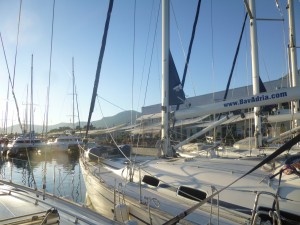 Visit the Croatia photo gallery to see more pictures.
Visit the Croatia photo gallery to see more pictures.
The post What to Pack for The Yacht Week first appeared on The Travel Sista.
]]>The post The Yacht Week: The Good, The Bad and The Ugly first appeared on The Travel Sista.
]]> Since I had to wait six months until we set sail, in advance of the trip I read numerous articles and blog posts to try to learn what to expect. I didn’t see many people of color so I wondered how we’d be received. But I’m always one for an adventure so I wasn’t deterred. Good thing, because it was an incredible experience I’ll never forget. (Click here to read all about my TYW adventure.)
Since I had to wait six months until we set sail, in advance of the trip I read numerous articles and blog posts to try to learn what to expect. I didn’t see many people of color so I wondered how we’d be received. But I’m always one for an adventure so I wasn’t deterred. Good thing, because it was an incredible experience I’ll never forget. (Click here to read all about my TYW adventure.)
But despite having read everything I could find about The Yacht Week, there were some things I was not prepared for. I share them below in what I call “The Good, The Bad, and The Ugly”. For those like me, who like to know everything good and bad, hopefully this post will give you a full picture of TYW (warning: “The Ugly” is real talk and may be TMI for some people). I mention any complaints in the interest of full disclosure (not to be a whiner) and any views expressed are mine alone.
The Good
Make no doubt about it, The Yacht Week was amazing and at times I felt like I was in a dream. I met diverse people from all over the world, repping their country’s flag and uniting in the pursuit of fun. I spent seven wonderful days sailing on beautiful, calm, blue waters and reveling in Croatia’s beauty. I partied for seven nights on land and at sea with new and old friends. I swam in the sea in a yacht-formed pool and rode a paddle boat inside the famous blue caves. I ate delicious Mediterranean cuisine and deserts (I highly recommend the lamb peka, Croatia’s national dish, and the gelato) and drank a lot of wine, liquor, and rakija (Croatian herbal brandy). Plus, I was treated to the warm hospitality of the Croatian people. The Yacht Week definitely lived up to its tagline “It’s Nothing Like the Real World”.
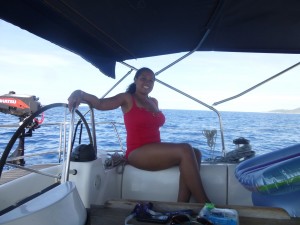 By the way, although we chose Croatia, there are a variety of locations and yachts at different price points, so just about everyone can find a deal they can afford. Our crew chose a 50-foot yacht (one of the largest boats) and paid approximately $1,300.00 per person, which included the yacht charter cost, yacht equipment, skipper, TYW wristbands, bank fees, taxes, and cleaning fees. We also paid additional costs of about $200.00 per person for port fees, fuel, water, groceries, skipper meals and tips (not including water taxis or restaurant meals, which we separately paid). Yeah, it was pricey, but overall it was a good value.
By the way, although we chose Croatia, there are a variety of locations and yachts at different price points, so just about everyone can find a deal they can afford. Our crew chose a 50-foot yacht (one of the largest boats) and paid approximately $1,300.00 per person, which included the yacht charter cost, yacht equipment, skipper, TYW wristbands, bank fees, taxes, and cleaning fees. We also paid additional costs of about $200.00 per person for port fees, fuel, water, groceries, skipper meals and tips (not including water taxis or restaurant meals, which we separately paid). Yeah, it was pricey, but overall it was a good value.
The Bad
The first “bad” occurred when we arrived at the Kastela marina in Croatia. We’d been told we’d have to sign paperwork during registration on our Saturday arrival day. What we weren’t told was that there would be several 20+ page contracts with waivers requiring you to absolve The Yacht Week, the skipper, and any related parties of nearly all liability. There was no mention of the waivers on the TYW website (at least not at the time of our booking or sailing). On top of that, there was a $2,000.00 deposit, which luckily was payable by cash or credit card. Personally, I think those contracts should be made available for TYW participants to review at the time of the initial reservation, so they can make a fully informed decision whether to participate. Although everything turned out fine, I was quite annoyed at the time because I felt like we were ambushed. The lawyer in me likes to thoroughly review such contracts before I obligate myself.
Another thing I didn’t like was the inconvenience and cost of the water taxis. On several islands we were unable to dock at the marinas and instead anchored at sea, necessitating the use of water taxis to transport us to and fro. Those costs were in addition to the yacht rental fee and quickly added up after several trips. Plus, there were not enough TYW-sanctioned water taxis to transport everyone at the same time and on several occasions we had long waits. It was frustrating because there were other water taxis available but they wouldn’t take us.
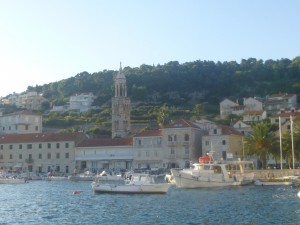 One more gripe was with the obvious discontent between the island of Hvar and TYW participants. Unfortunately, because prior Yacht Weekers misbehaved, the reputation of The Yacht Week has been soured in Hvar. Although it was not the case with everyone, several vendors looked at our TYW wristbands and showed obvious disgust at our presence. The bouncer at one nightclub told us “no Yacht Week” and refused us entry. It’s too bad because Hvar is a lovely place and the poor reception soured the experience. Hopefully, this relationship can be mended in the future.
One more gripe was with the obvious discontent between the island of Hvar and TYW participants. Unfortunately, because prior Yacht Weekers misbehaved, the reputation of The Yacht Week has been soured in Hvar. Although it was not the case with everyone, several vendors looked at our TYW wristbands and showed obvious disgust at our presence. The bouncer at one nightclub told us “no Yacht Week” and refused us entry. It’s too bad because Hvar is a lovely place and the poor reception soured the experience. Hopefully, this relationship can be mended in the future.
My biggest gripe was with the music; only house/techno/electro music was played at TYW parties. Although I like electro, it got old after several days. With so many diverse countries represented at The Yacht Week, it would have been cool to hear genres from each country — like some reggae from Jamaica, axé from Brazil, and hip hop from the USA (hint, hint, hint).
The Ugly
After several days, the novelty of living on a boat wears off. Forget about long, hot showers; you must get in and out quickly to preserve the limited water in the on-board tanks, and the water may not always be warm. You’ll treasure the few times when we dock at marinas with on-site showers (though you will also wait in line for a real shower). There will be no flushing toilets on board for a week; toilet waste is emptied using a hand or foot pump. Used tissue and feminine products go into a nearby plastic bag for later disposal at dockside (tissue can’t be flushed due to the marine plumbing system). The cramped quarters and small beds will become uncomfortable (even though you won’t be sleeping much), and if your boat doesn’t have A/C, it may get hot below deck during the day.
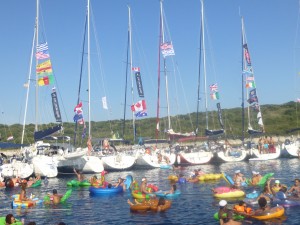 By now, you get the point. There’s a trade off to living the good life. Make sure you have a cool group of people on board because you’ll be in close quarters for seven days and nights. But being on the water is wonderful and you’ll have so much fun that it will be all worth it. Anchors away!
By now, you get the point. There’s a trade off to living the good life. Make sure you have a cool group of people on board because you’ll be in close quarters for seven days and nights. But being on the water is wonderful and you’ll have so much fun that it will be all worth it. Anchors away!
Have you been on The Yacht Week? What did you like or dislike? Share your comments below.
Share ThisThe post The Yacht Week: The Good, The Bad and The Ugly first appeared on The Travel Sista.
]]>